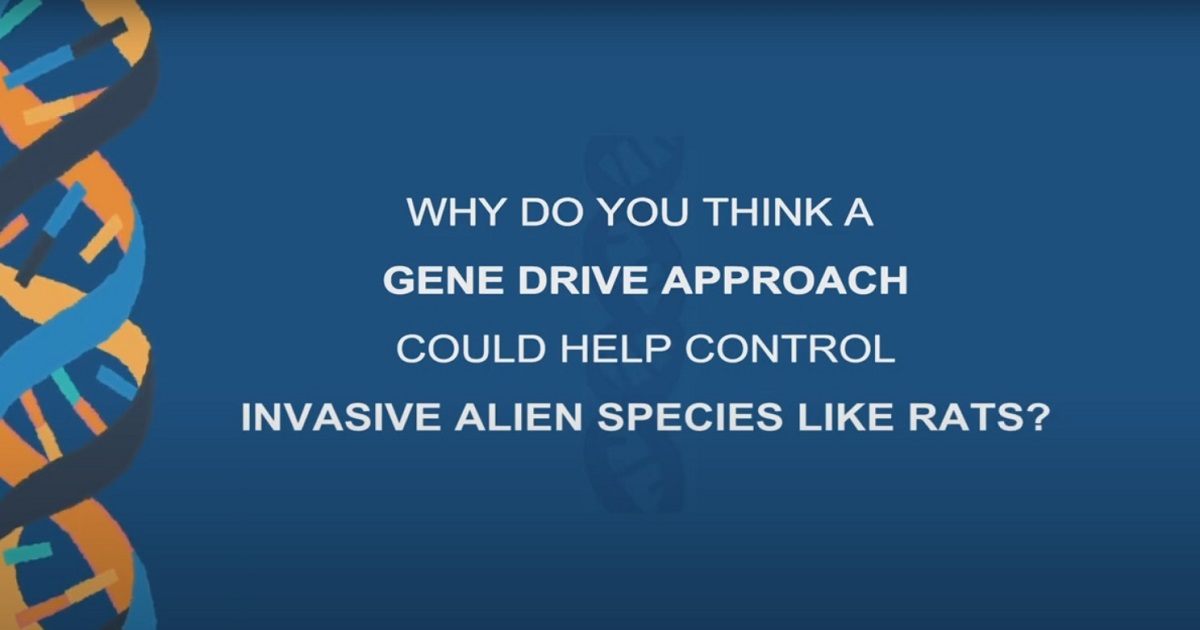
Can Gene Drive Help Control Invasive Species Like Rats?
February 22, 2023| |
Historically, the most significant number of extinctions happen on small islands. One of its leading causes is the introduction of invasive species due to human activity. Rats, for example, were unintentionally brought to islands when sea explorers tried to map the world hundreds of years ago. To date, these rats have become a threat to the local biodiversity. They are responsible for 40-60% of reptile extinctions and endangering many species of sea birds.
The problem is not just the threat of the invasive species itself but also the trade-offs in the inherent risk that comes with the methods to control them. These methods include poisoning and culling, which are harmful to rats and have unintended side effects for other species nearby. While poison may work to eliminate rats, it can also enter the food chain and possibly affect the human population in the area.
Scientists are looking at other means to control the invasive rat species populations. One of the tools they are particularly interested in is gene drive technology. "Here's a tool that potentially has no consequences for a non-target species and no implications in the ecosystem as compared to use of the rodenticides. It has the potential to solve problems at a high degree of scale and precision as it is species-focused. In other words, we can get all the benefits of removing introduced rodents from islands without any risks that come from the current tools," said Gregg Howald, Director of Advanced Conservation Initiatives.
Bridget Baumgartner, Program Manager at Revive & Restore, recognizes the benefits of gene drives' specificity and highlights that gene drives are also more humane compared to poisoning or culling - an organism that is not born or is born sterile has a higher life quality than one that is hunted or culled, says Baumgartner.
According to the experts, once assessment results confirm gene drive tools can be deployed safely and effectively, they can become a valuable tool to address invasive alien species, ultimately contributing to reverse biodiversity loss trends.
To learn more, watch the video by the Outreach Network for Gene Drive Research.
| |
You might also like:
- Technology Specifics Key to Efficient Risk Assessment, Says Experts
- Gene Drive Research: Laboratory Tests and Field Trials Are Complementary, Says Experts
- Experts Explain Difference Between CRISPR and Gene Drive
Biotech Updates is a weekly newsletter of ISAAA, a not-for-profit organization. It is distributed for free to over 22,000 subscribers worldwide to inform them about the key developments in biosciences, especially in biotechnology. Your support will help us in our mission to feed the world with knowledge. You can help by donating as little as $10.
-
See more articles:
-
Gene Drive Supplement (February 22, 2023)
- TED-Ed Video Tackles Ethical Dilemmas of Eradicating Mosquitoes
- Study: No One-size-Fits-All Representation of Trust in Science and Scientists
- Can Gene Drive Help Control Invasive Species Like Rats?
- Gene Drive Technology May Have Potential Applications in Agriculture
- Community Engagement Vital to Malaria Elimination Efforts
-
Read the latest: - Biotech Updates (January 14, 2026)
- Gene Editing Supplement (December 17, 2025)
- Gene Drive Supplement (February 22, 2023)
-
Subscribe to BU: - Share
- Tweet

